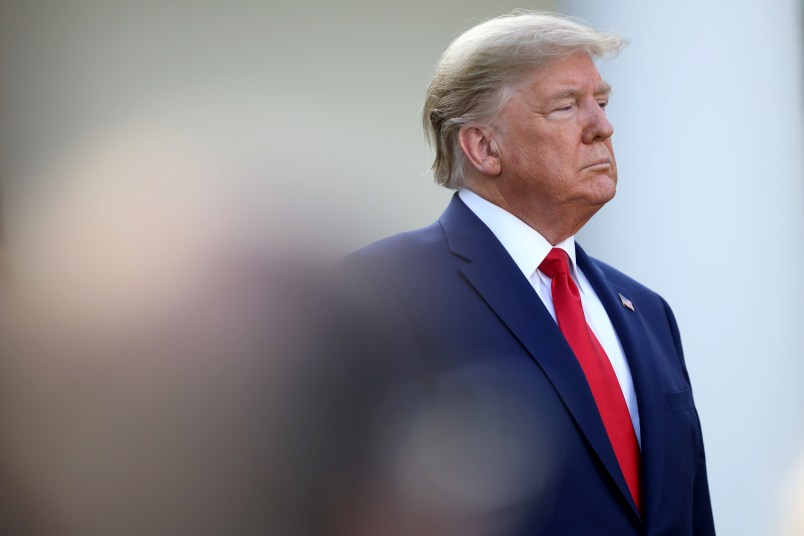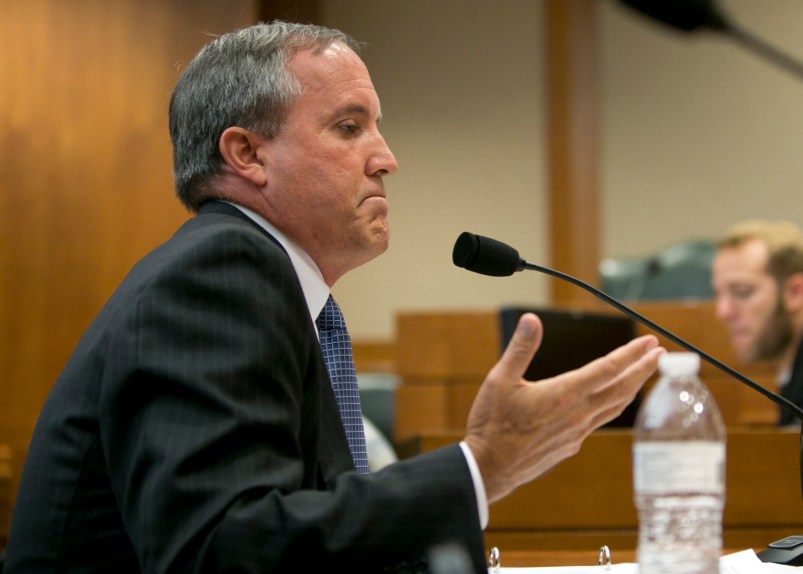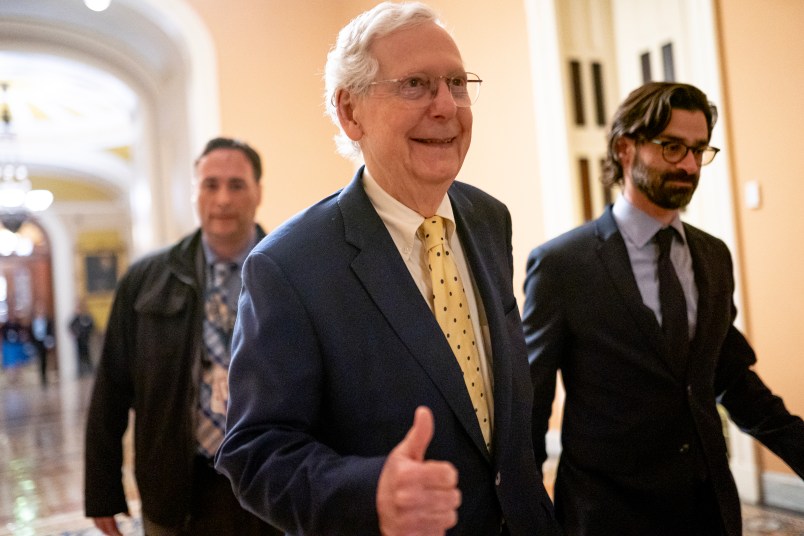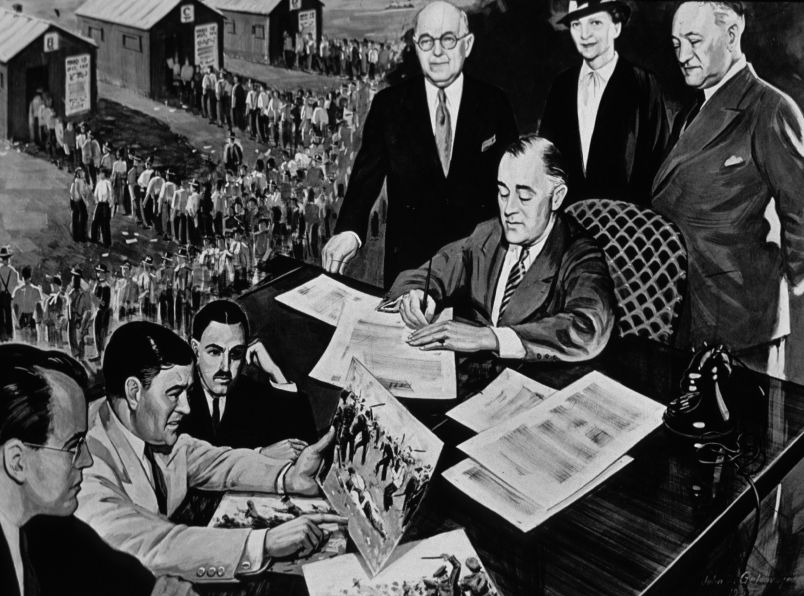This article is part of TPM Cafe, TPM’s home for opinion and news analysis.
The Trump administration has now twice authorized the use of the Defense Production Act but has stubbornly refused to use its powers and tools on a systemic basis to address the COVID-19 crisis. This is not only head-scratching, but self-defeating.
The simple fact is that the DPA, together with U.S. contracting capabilities and funding, can be utilized to methodically plan short, medium and long term solutions to health supply needs that can more quickly enable the country to return to some semblance of normalcy.
First, the President invoked some DPA powers – to prioritize and allocate production but said he only planned to use it in a “worst case” scenario. Yesterday, he authorized additional DPA powers – to incentivize businesses to expand capacity through loans and other measures and voluntary industrial agreements as needed.
But, other than with respect to a single company, the President has steadfastly declined to use the authorities he’s invoked in any type of holistic way. All signs point to the refusal being driven perhaps in part by an ideological desire to rely on our private sector’s historic ability to step up and meet market needs without the government’s heavy hand. The President himself has raised the spectre that the DPA could result in the nationalization of industry – which has no basis in fact.
Indeed, the business community has lobbied against the use of the DPA, with the Chamber of Commerce raising the red herring that the United States would be in violation of its World Trade Organization requirements. This ignores the fact that the WTO has an “essential security” exception that surely can be invoked in this crisis situation. The Chamber’s assertion that the use of the DPA would somehow break up global supply chains also seems specious. The point here is to use the DPA to increase global volume and take the pressure off supply chains, and not disrupt them.
Volunteerism by industry is admirable and perhaps can help address the underlying health shortfalls at the margin. But, let’s be frank about it. The ad hoc reach-outs by White House advisors like Peter Navarro to underwear companies and other willing volunteers is no substitute for a serious industrial mobilization under the DPA. This type of ad hoc approach is at best likely to be only partially effective and at worst create false expectations and foster belief that the problem is being addressed when it’s not. And, worst of all, we run the risk of not knowing that the voluntary approach didn’t work until it’s too late.
In short, the answer here is clear. The administration needs to rapidly assemble an interagency team outside of the White House with the right experience, drawing on Health and Human Services for its health expertise, FEMA and the Department of Defense for their contracting expertise in exigencies (FEMA in natural disasters, DOD in setting up rapid equipping programs during the wars in Afghanistan and Iraq), and other relevant departments and agencies.
Having the team outside the White House avoids the appearance or reality that the choices being made are political in nature, avoids ethical issues or favoritism, and allows officials with the right competencies to make fact and needed-based judgments – using the right criteria of expediency (time), cost and technical capability. This is particularly important when, as here, lucrative contracts are being let.
Then, rather than engage in ad hoc reach outs, the integrated team needs to not only survey needs quickly, but survey the current state of companies that make the key products and see what additional supplies they can be incentivized to provide. While one might expect that companies that produce N-95 masks for example are performing at full rate, around the clock production, in fact there may be other factors that limit their output or cause them to make other choices. That’s where the DPA can help to make a difference – where its authority can be used to press companies to do their utmost.
Further, if the specific industries are at full capacity, the integrated team needs to look at how these firms’ capabilities can be rapidly increased – for example, can we add another production line at the facility of an experienced company? And, then if that is insufficient, we need to look at firms that make close substitutes and can most readily provide the needed health products expeditiously, affordably and while meeting needed technical requirements.
Again, while willing volunteers are great, even first rate industrial firms that don’t today make close substitutes will have difficulty bridging the gaps here in the short or medium term. Already, for example, we hear – quite understandably – that these firms probably can’t produce the needed N-95 in the short term.
Finally, beyond the initial needs, we need to add capacity to build the National Medical stockpile (which is admittedly too limited) and to provide surge capability for recurrences in the next eighteen months. As the curve “flattens” and the rate of new cases recede, we need to move to a new normalcy that allows most to go back to work, with the remaining sick still sheltered, the vulnerable subject to ongoing limitations and, very relevant here, reserves of medical equipment to use in the event of recurrences.
In short, what the Administration is “not getting” is the idea of using the DPA’s authorities and tools and other government authorities to undertake a systematic approach – short, medium and long term – to building surge capabilities for not only supplies, but hospital beds and ICU units. And, that this type of systemic approach to the COVID-19 crisis will not only help meet short term needs but provide insurance in the form of supplies, beds and ICU units against recurrences that can facilitate our ability to reopen the economy – exactly what we all want.
Further, the use of DPA authorities being advocated may not necessarily require heavy-handed orders and certainly will not require any type of government takeover of industry – as some apparently suggest. Rather, the prospect of the use of these authorities can very likely bring industry to the table for constructive, consensual solutions.
In fairness, it is not surprising that the administration is reluctant to go the systematic DPA route because we lack institutional government memory about how to undertake this type of industry-wide planned effort. The DPA has been mostly used for rated defense contracts on major defense systems (a routine event), periodic ad hoc use to rate orders in natural emergencies, and limited efforts to create domestic facilities for certain defense capabilities (one facility here, another there). It has not been used for any type of systemic effort like this in many years.
But the lack of institutional memory is no excuse for not trying. We need to do the best we can to limit the crisis and use all the capabilities available, including the DPA. If the after-action report finds that the government used the DPA too much, I, for one, could live with that.
Ad hoc volunteerism by industry is great and should be applauded. But if relying on underwear companies and other willing volunteers doesn’t work, we risk prolonging the crisis and limiting our ability to return to normalcy – in other words, exactly the outcome the President is trying to avoid.
Jeffrey Bialos is a partner at Eversheds-Sutherland, a global law firm. He previously served as Deputy Under Secretary of Defense for Industrial Affairs and as a member of Secure Virginia, the state’s homeland security advisory board.









